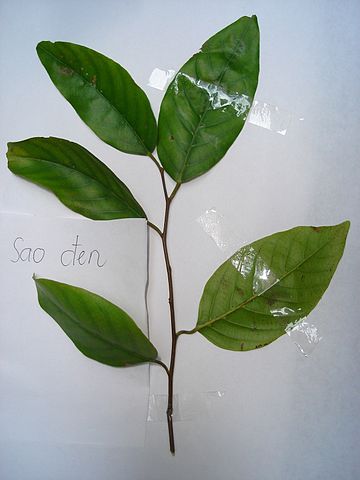Hopea odorata is a species of tree in the plant family Dipterocarpaceae. It is found in Bangladesh, Cambodia, India, Laos, Malaysia, Singapore, Myanmar, Thailand, and Vietnam.[1]
| Hopea odorata | |
|---|---|
 | |
| Leaves of Hopea odorata | |
| Scientific classification | |
| Kingdom: | Plantae |
| Clade: | Tracheophytes |
| Clade: | Angiosperms |
| Clade: | Eudicots |
| Clade: | Rosids |
| Order: | Malvales |
| Family: | Dipterocarpaceae |
| Genus: | Hopea |
| Species: | H. odorata |
| Binomial name | |
| Hopea odorata | |
| Synonyms[2] | |
|
List
| |
Description
H. odorata is a large tree reaching up to 45 m (150 ft) in height with the base of the trunk reaching a diameter of 4.5 m (15 ft). It grows in forests, preferably near rivers, at elevations to 600 m (2,000 ft). In places such as West Bengal, the Andaman Islands and southern Vietnam it is often planted as a shade tree.[3] Valued for its wood, which shows resistance to termites, it is a threatened species in its natural habitat.[1]
Traditions
In Thailand, where it is known as ta-khian (Thai: ตะเคียน), this tree is believed to be inhabited by a certain tree spirit known as Lady Ta-khian (Thai: นางตะเคียน), belonging to a type of ghosts related to trees known generically as Nang Mai (นางไม้).[4]
Gallery
- A leaf of Hopea odorata
- Lengths of brocade tied around the exposed roots of a Hopea odorata tree (ตะเคียน) growing on a steep slope as an offering to Nang Ta-khian
- Hopea odorata at Hùng Temple, Vietnam
References
External links
Wikiwand - on
Seamless Wikipedia browsing. On steroids.





